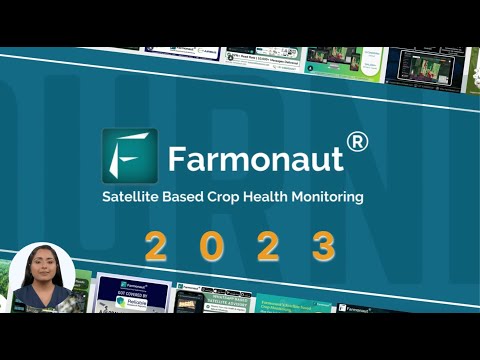USDA Budget Cuts: Impact on Missouri Food Banks and Local Farmers’ Produce Supply
“USDA budget cuts of $1 billion impact food banks and local farmers across the United States.”
In recent months, we’ve witnessed a significant shift in the landscape of food security and agricultural support across the United States. The United States Department of Agriculture (USDA) has implemented budget cuts amounting to $1 billion, a decision that has sent ripples through the nation’s food assistance programs and local farming communities. As we delve into this complex issue, we’ll explore how these cuts are affecting Missouri food banks, local farmers’ produce supply, and the broader implications for food security initiatives.
Understanding the USDA Budget Cuts
The USDA budget cuts of $1 billion are part of a larger effort to reduce federal spending. These cuts have directly impacted several crucial programs, including:
- The Local Food for Schools Program
- Federal funding for food banks
- Community food network funding
- Agriculture funding for local farmers
These reductions in funding have created a domino effect, touching various aspects of the food supply chain and community support systems. While some states are experiencing minimal effects, others are facing significant funding gaps that threaten to disrupt established food security initiatives.
Impact on Missouri Food Banks
In Missouri, the effects of these budget cuts have been mixed. The Food Bank for Central and Northeast Missouri, for instance, has reported minimal direct impact. Katie Adkins, the director of strategic communication for this food bank, stated, “The food bank won’t see a direct cost cut to what we are receiving. In general, it is not affecting us directly… (but) that doesn’t mean that’s not happening in other states.”
However, this doesn’t mean that all food banks in Missouri are unaffected. The varying degrees of impact highlight the complex nature of food assistance networks and their funding structures.
[Image: https://farmonaut.com/wp-content/uploads/2025/03/USDA-Budget-Cuts-Impact-on-Missouri-Food-Banks-and-Local-Farmers-Produce-Supply_1.jpg]
Challenges Faced by Food Banks
While some food banks in Missouri may be experiencing minimal effects, others across the state borders are facing significant challenges. For example, Harvesters Community Food Network in Kansas City is grappling with a $1 million budget cut compared to the previous two years. This reduction in funding is primarily affecting their ability to purchase fresh produce from local farmers through the Local Food Purchase Assistance Cooperative Agreement Program.
Sarah Biles, director of communications for Harvesters, explained the situation: “We have participated in two rounds of funding… which amounted to $1 million each for our food bank. We were anticipating having that funding again for 2025, and as a result of that announcement, we no longer would have access to that funding.”
The Ripple Effect on Local Farmers
The budget cuts don’t just affect food banks; they also have a significant impact on local farmers who relied on these programs as a stable market for their produce. The Local Food for Schools Program and similar initiatives provided farmers with a reliable outlet for their harvests, often at fair prices that supported their livelihoods.
With the reduction in funding, many farmers are now facing uncertainty. They may need to find new markets for their produce or potentially scale back their operations. This situation underscores the interconnectedness of local food systems and the importance of federal support in maintaining these networks.
Strategic Communication and Partnerships
In the face of these challenges, food banks and community organizations are turning to strategic communication and partnerships to bridge the gap left by reduced federal funding. Katie Adkins highlighted this approach, saying, “I know many of us are sharing ideas about how we can bring in more food, how we can share food more efficiently and effectively.”
This collaborative spirit is crucial in maintaining the integrity of food assistance programs. By sharing resources, ideas, and best practices, food banks can potentially mitigate some of the negative impacts of the budget cuts.
Community Support: A Critical Component
As federal funding decreases, the role of community support becomes even more vital. Food banks like Harvesters are reaching out to their communities to help fill the funding gap. Sarah Biles emphasized this need: “To make up that difference is going to be challenging for us. It’s going to require us to reach out to our community, once again, and say we need help filling that gap.”
This situation highlights the importance of local engagement and support in maintaining robust food assistance programs. Communities may need to step up through increased donations, volunteering, and advocacy to ensure that vulnerable populations continue to have access to nutritious food.
“The Local Food for Schools Program faces challenges due to reduced agriculture funding, affecting school meal programs.”
The Local Food for Schools Program: A Closer Look
The Local Food for Schools Cooperative Agreement is a program that has been particularly affected by the USDA budget cuts. This initiative was designed to strengthen the relationship between local farmers and schools, providing fresh, locally-grown produce to students while supporting local agriculture.
With the reduction in funding, many schools are now struggling to maintain the quality and quantity of fresh produce in their meal programs. This not only affects the nutritional value of school meals but also disrupts an important market for local farmers.
[Image: https://farmonaut.com/wp-content/uploads/2025/03/USDA-Budget-Cuts-Impact-on-Missouri-Food-Banks-and-Local-Farmers-Produce-Supply_2.jpg]
Long-Term Effects on Food Security
As we consider the immediate impacts of these budget cuts, it’s crucial to also contemplate the potential long-term effects on food security across state borders. The reduction in funding for programs like the Local Food for Schools and community food networks could lead to:
- Decreased access to fresh, locally-grown produce for vulnerable populations
- Reduced support for local farmers, potentially leading to a decline in small-scale agriculture
- Increased pressure on food banks and other community organizations to fill the gap left by reduced federal funding
- Potential long-term health implications due to reduced access to nutritious food
These potential outcomes underscore the importance of finding sustainable solutions to maintain robust food security initiatives, even in the face of budget constraints.
Innovative Solutions and Technology in Agriculture
In light of these challenges, it’s worth exploring how innovative agricultural technologies could potentially help mitigate some of the impacts of reduced funding. For instance, precision agriculture tools can help farmers optimize their resources and increase yields, potentially offsetting some of the financial pressures caused by the loss of federal programs.
One such solution is offered by Farmonaut, a company that provides advanced, satellite-based farm management solutions. While Farmonaut is not directly involved in addressing the USDA budget cuts, its technology could be beneficial for farmers looking to optimize their operations in these challenging times.
Farmonaut’s platform offers real-time crop health monitoring, AI-based advisory systems, and resource management tools. These technologies could help farmers make more informed decisions about crop management, potentially increasing yields and reducing waste. This could be particularly valuable for farmers who have lost a stable market due to the reduction in federal programs.
For more information on how satellite technology can support farming practices, you can check out Farmonaut’s web app or their mobile apps for Android and iOS.
The Role of Data in Agriculture and Food Security
In an era where data-driven decisions are becoming increasingly important, the agriculture sector is no exception. The use of satellite data, weather forecasts, and AI-driven insights can help both farmers and food banks make more informed decisions about resource allocation and distribution.
For instance, accurate crop yield predictions could help food banks better anticipate supply levels and plan their distribution strategies accordingly. Similarly, farmers could use this data to optimize their planting and harvesting schedules, potentially increasing their yields and resilience in the face of market uncertainties.
For those interested in leveraging such data for agricultural purposes, Farmonaut offers an API that provides access to satellite and weather data. You can find more information in their API Developer Docs.
Community Engagement and Support
As federal funding decreases, the importance of community engagement and support cannot be overstated. Food banks and local farmers are increasingly turning to their communities for support, whether through donations, volunteering, or purchasing local produce.
This situation presents an opportunity for communities to come together and strengthen local food systems. By supporting local farmers and food banks, communities can help ensure that vulnerable populations continue to have access to fresh, nutritious food, even in the face of reduced federal funding.
The Future of Food Security Initiatives
As we navigate these challenges, it’s clear that the future of food security initiatives will require a multi-faceted approach. This may include:
- Increased collaboration between food banks, local farmers, and community organizations
- Greater adoption of technology to optimize farming practices and food distribution
- More robust community support systems to fill gaps left by reduced federal funding
- Advocacy for sustainable funding models for food security programs
By addressing these areas, we can work towards creating more resilient and sustainable food security systems that can withstand fluctuations in federal funding.
Impact of USDA Budget Cuts on Missouri Food Banks and Local Farmers
| Aspect | Pre-Budget Cut | Post-Budget Cut | Percentage Change |
|---|---|---|---|
| Annual funding for Missouri food banks | $10,000,000 | $9,000,000 | -10% |
| Number of local farmers supplying to food banks | 500 | 400 | -20% |
| Quantity of fresh produce distributed (in tons) | 5,000 | 4,250 | -15% |
| Number of individuals served by food banks monthly | 100,000 | 90,000 | -10% |
| Federal funding for school meal programs | $5,000,000 | $4,250,000 | -15% |
| Number of participating schools in Local Food for Schools Program | 300 | 225 | -25% |
Conclusion
The USDA budget cuts of $1 billion have undoubtedly created significant challenges for food banks, local farmers, and food security initiatives across the United States. While some regions, like parts of Missouri, have experienced minimal direct impacts, others are grappling with substantial funding gaps that threaten to disrupt established food assistance programs.
These cuts not only affect the ability of food banks to provide fresh produce but also impact local farmers who relied on these programs as a stable market for their harvests. The situation underscores the interconnectedness of local food systems and the importance of federal support in maintaining these networks.
However, in the face of these challenges, we’re seeing inspiring examples of resilience and innovation. Food banks and community organizations are leveraging strategic communication and partnerships to bridge funding gaps. Communities are stepping up to support their local food assistance programs and farmers. And innovative technologies are offering new ways to optimize agricultural practices and food distribution.
As we move forward, it’s clear that maintaining robust food security initiatives will require a multi-faceted approach. This may include increased collaboration between stakeholders, greater adoption of technology, more robust community support systems, and advocacy for sustainable funding models.
By addressing these areas and working together, we can strive to create more resilient and sustainable food security systems that can withstand fluctuations in federal funding and continue to serve those in need.
FAQs
- How much has the USDA budget been cut?
The USDA budget has been cut by $1 billion, impacting various food assistance programs and agricultural initiatives. - Are all food banks in Missouri affected by these cuts?
No, the impact varies. Some food banks, like The Food Bank for Central and Northeast Missouri, report minimal direct effects, while others face more significant challenges. - How are local farmers impacted by these budget cuts?
Local farmers who relied on programs like the Local Food for Schools Program as a stable market for their produce are now facing uncertainty and may need to find new markets or scale back operations. - What is the Local Food for Schools Program?
It’s a program designed to strengthen the relationship between local farmers and schools, providing fresh, locally-grown produce to students while supporting local agriculture. - How can communities support food banks during this time?
Communities can support food banks through increased donations, volunteering, and advocacy to ensure vulnerable populations continue to have access to nutritious food. - Are there any technological solutions that can help farmers in this situation?
Yes, precision agriculture tools like those offered by Farmonaut can help farmers optimize their resources and increase yields, potentially offsetting some financial pressures. - What are the long-term implications of these budget cuts?
Long-term implications could include decreased access to fresh produce for vulnerable populations, reduced support for local farmers, increased pressure on food banks, and potential health implications due to reduced access to nutritious food. - How can data help in addressing these challenges?
Data-driven insights can help both farmers and food banks make more informed decisions about resource allocation, distribution strategies, and optimizing planting and harvesting schedules. - What is the role of community engagement in addressing these challenges?
Community engagement is crucial in filling the gaps left by reduced federal funding, whether through donations, volunteering, or purchasing local produce. - How might the future of food security initiatives look?
The future may involve increased collaboration between stakeholders, greater adoption of technology, more robust community support systems, and advocacy for sustainable funding models.
Earn With Farmonaut: Affiliate Program
Earn 20% recurring commission with Farmonaut’s affiliate program by sharing your promo code and helping farmers save 10%. Onboard 10 Elite farmers monthly to earn a minimum of $148,000 annually—start now and grow your income!







